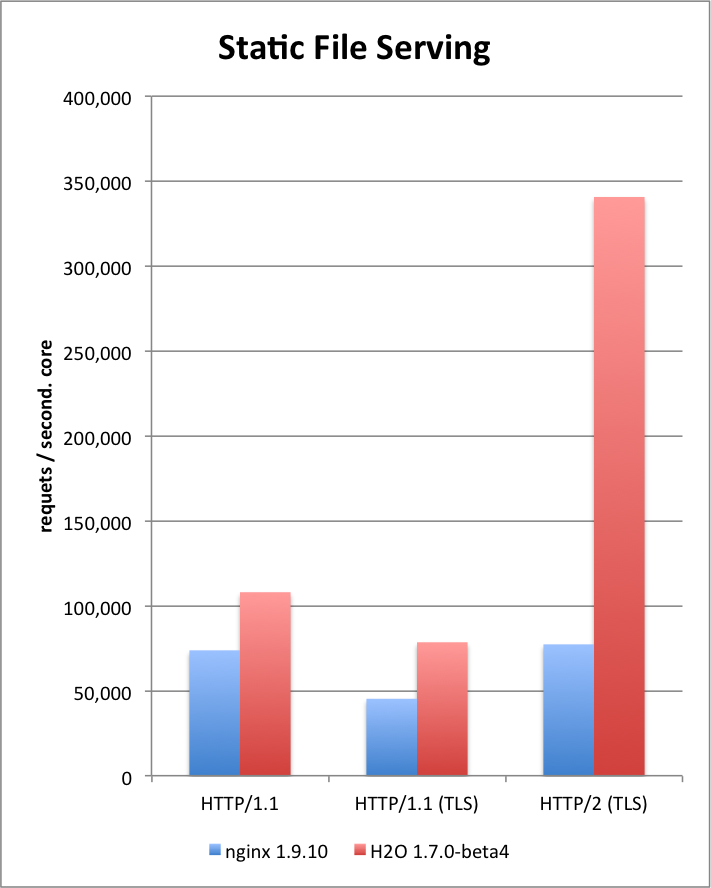Today I am happy to announce that we have tagged the
1.7.0-beta1 release of
H2O HTTP2 server. Among the changes, there are few ones that should be noted.
HTTP client in mruby #643
In 1.7,
mruby support has ben enhanced so that handlers written in mruby can issue HTTP requests. And it is damn simple. Shown below is a full-fledged reverse proxy implementation using mruby.
mruby.handler: |
Proc.new do |env|
# copy headers
headers = {}
env.each do |key, value|
if /^HTTP_/.match(key)
headers[$'] = value
end
end
# issue the request
http_request(
"http://app.example.com#{env["REQUEST_URI"]}",
method: env["REQUEST_METHOD"],
headers: headers,
body: env["rack.input"],
).join
endH2O exports one ruby method named
http_request. It takes a URL and a hash of optional parameters (e.g. method, headers, body) as the arguments, and returns immediately a handle to the request. All the network operations are handled asynchronously in the event loop of H2O.
When the mruby code calls the
#join method, it returns
a Rack response, either immediately (if available), or when the response headers become available. The returned body (3rd element of the response array) is an object that responds to
#each; calling the method will yield the chunks of an HTTP response as they arrive.
Using the asynchronous nature of the HTTP client interface, it is possible to implement sophisticated server-side logic like
Edge-side includes in very few lines of code; hopefully I will cover that in a different post.
Support for CGI #618
A FastCGI-to-CGI gateway script is included in the distribution. As shown in the example below, it is easy to create per-extention mapping to the gateway script to run CGI applications as they do on the Apache HTTP server.
file.custom-handler:
extension: .cgi
fastcgi.spawn:
command: "exec share/h2o/fastcgi-cgi"It also has the flexibility to limit the number of CGI processes running concurrently (by using
--max-workers option), or to run CGI applications under different directories with different user privileges by specifying appropriate user names for each directory-level
fastcgi.spawn configuration.
Support for Basic Authentication #624
The distribution also bundles a basic authenticator written in mruby. The configuration snippet below will be enough to understand how it should be configured.
mruby.handler: |
require "#{$H2O_ROOT}/share/h2o/mruby/htpasswd.rb"
Htpasswd.new("/path/to/.htpasswd", "realm-name")
file.dir: /path/to/secret-filesThe script will also be a good reference for people learning how to write mruby handlers for H2O.
Support for wild-card hostnames #634
The server finally supports wild-card hostnames as well, which is essential if you have multiple wild-card certificates to be used.



















